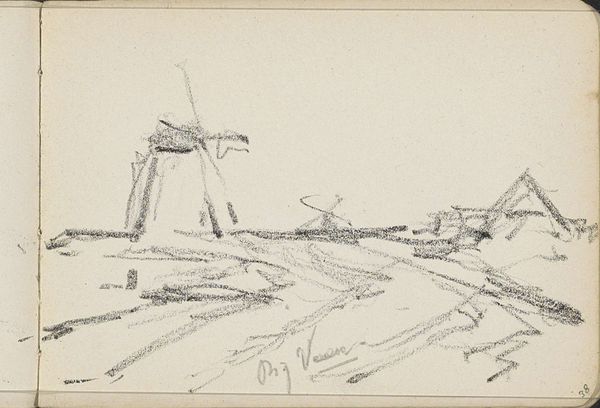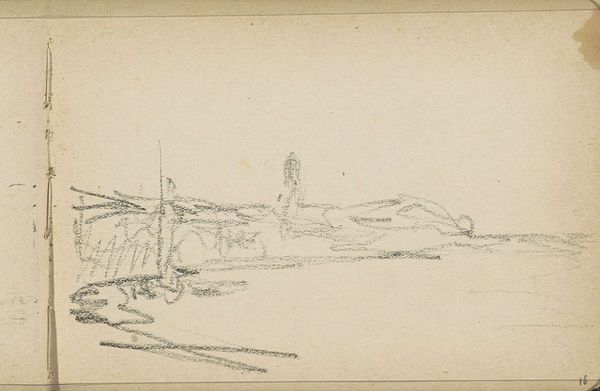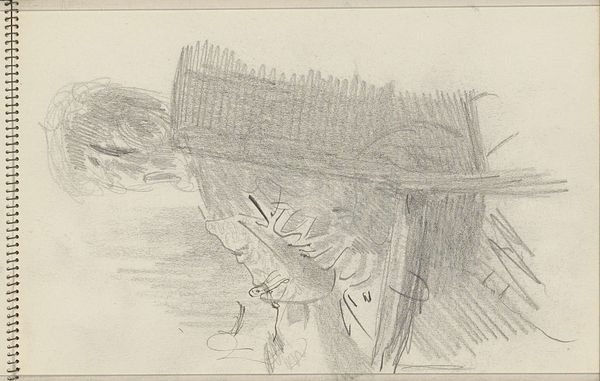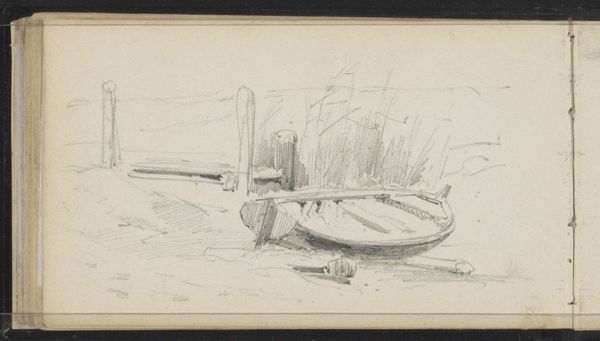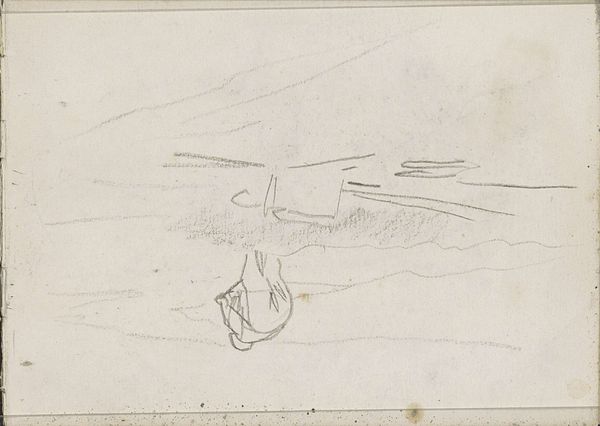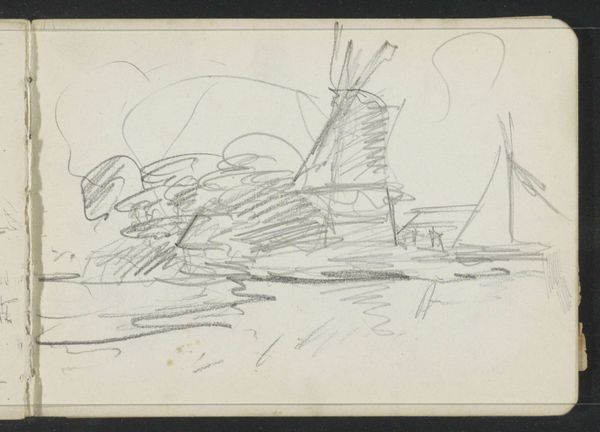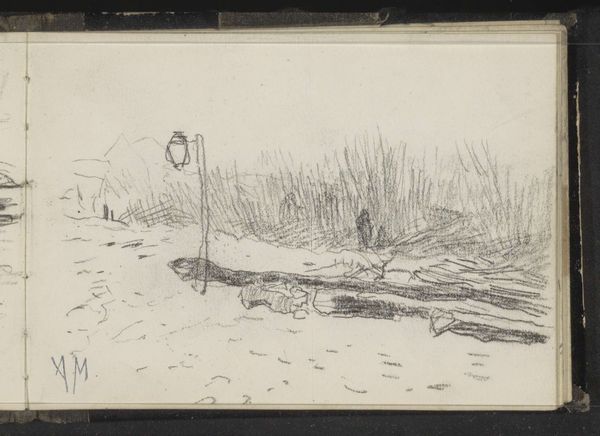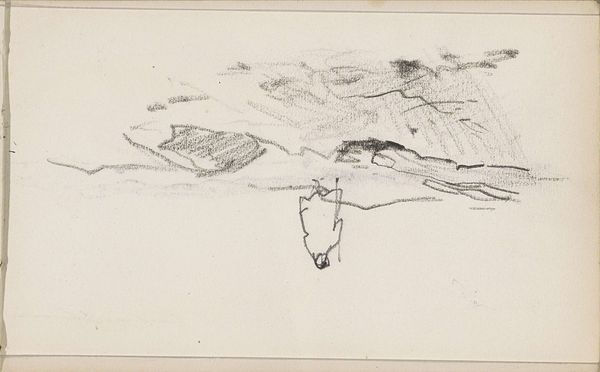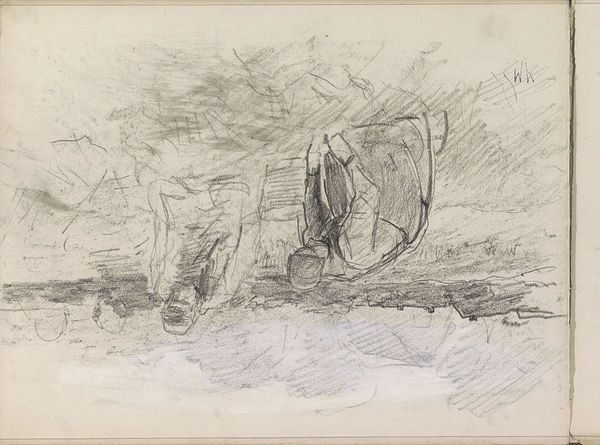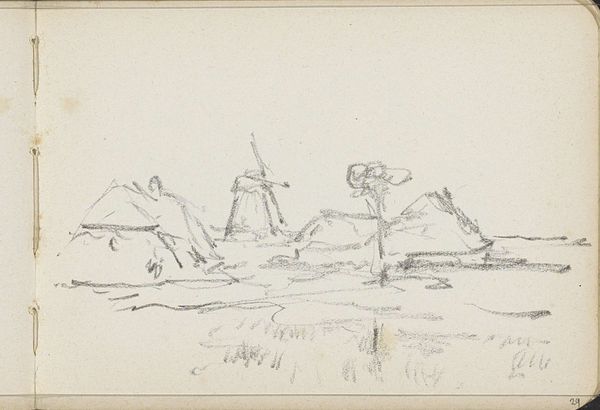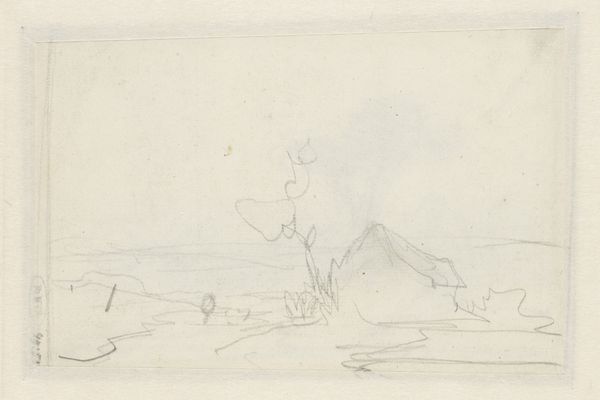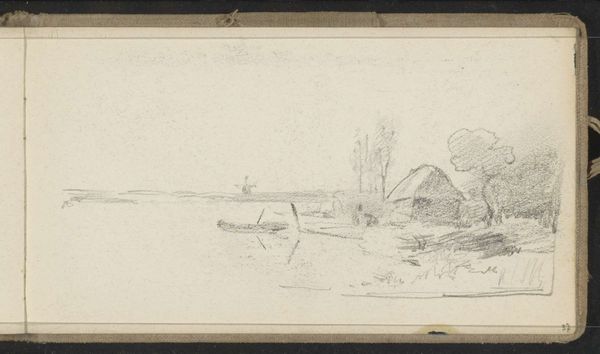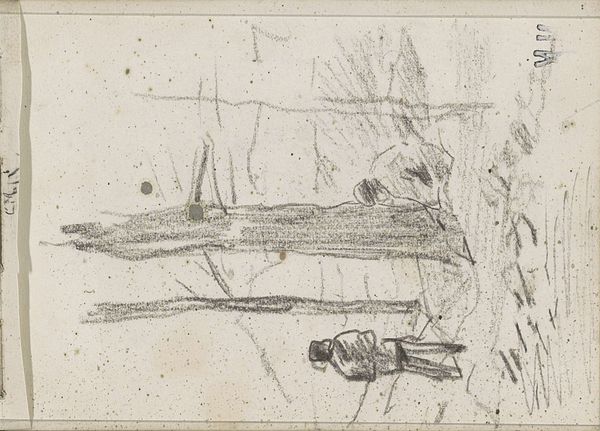
drawing, pencil
#
drawing
#
pencil
Copyright: Rijks Museum: Open Domain
Editor: We're looking at "Two Mills on a Waterfront" by Willem Cornelis Rip, probably created sometime between 1866 and 1922. It’s a pencil drawing, and I'm struck by how rudimentary it appears; almost like a preliminary sketch. What can you tell me about this work? Curator: Well, look closer at the hatching and the quality of line. The artist made a conscious decision regarding the surface upon which to apply graphite to represent two mills. Pencil itself, as a material, democratized artmaking. Consider the ready availability of graphite and paper in the late 19th century. What did that mean for access to artmaking for a wider segment of the population? Editor: That's interesting. So you are focusing less on the image and more on the production itself, that its access was greater. Curator: Precisely. How might this impact artistic training, the definition of “fine art”, or the rise of different aesthetic movements that explore more the working-class experiences, with this accessibility of material in mind? What might this sketch represent about the artist's, and indeed the public’s, changing relationship to labor with the advent of industrialization? Editor: I see what you mean. These windmills become almost like factories; their value reframed around this transition and material. So it’s not just a picturesque landscape but also something reflective of social change... Curator: Yes! How does this medium—a simple pencil—help tell that story? It's not the oil paintings typically hung in high society drawing rooms, is it? What social space does this piece intend to occupy? Editor: Thinking about the drawing as a material object really opens it up to asking a lot of new and relevant questions. Curator: Exactly! Looking at art this way can lead us to understand better not just what artists made, but how and why.
Comments
No comments
Be the first to comment and join the conversation on the ultimate creative platform.
